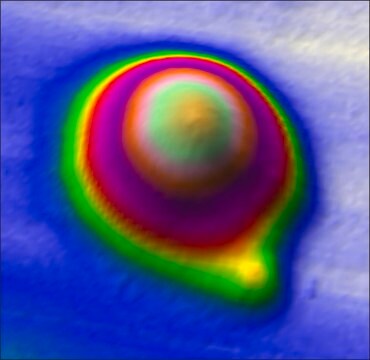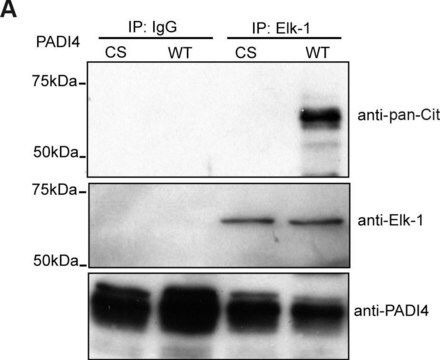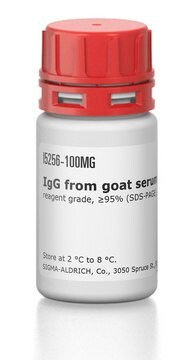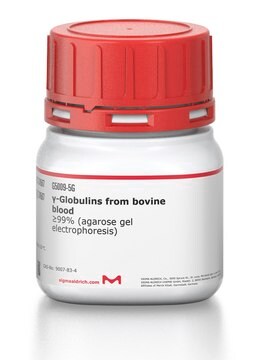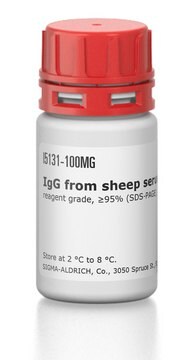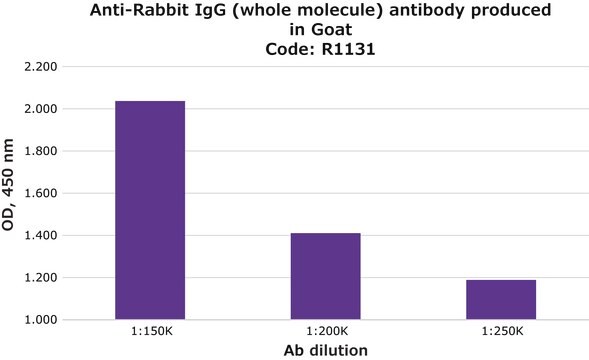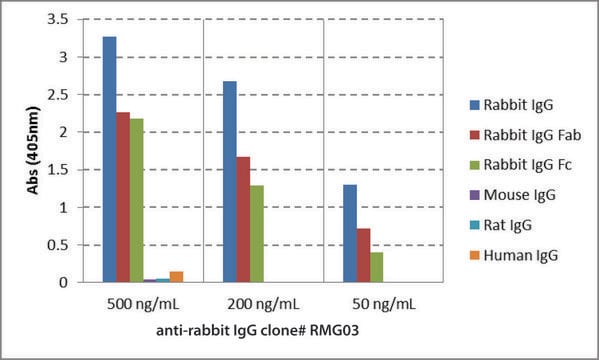Wszystkie zdjęcia(4)
Key Documents
I5006
IgG from rabbit serum
reagent grade, ≥95% (SDS-PAGE), essentially salt-free, lyophilized powder
Synonim(y):
Rabbit IgG
Zaloguj sięWyświetlanie cen organizacyjnych i kontraktowych
About This Item
Polecane produkty
białko sprzężone
unconjugated
Poziom jakości
klasa czystości
reagent grade
Próba
≥95% (SDS-PAGE)
Postać
essentially salt-free, lyophilized powder
temp. przechowywania
2-8°C
Szukasz podobnych produktów? Odwiedź Przewodnik dotyczący porównywania produktów
Opis ogólny
IgG antibody subtype is the most abundant serum immunoglobulins of the immune system. It is secreted by B cells and is found in blood and extracellular fluids and provides protection from infections caused by bacteria, fungi and viruses. Maternal IgG is transferred to fetus through the placenta that is vital for immune defence of the neonate against infections
Rabbit IgG is purified from normal rabbit serum by fractionation and ion-exchange chromatography.
Rabbit IgG is purified from normal rabbit serum by fractionation and ion-exchange chromatography.
Zastosowanie
Purified rabbit IgG may be used as a reference antigen, standard, blocking agent, or coating protein in a variety of immunoassays including ELISA, dot immunobinding, Western immunoblotting, immunodiffusion, and immunoelectrophoresis. Other applications include starting materials for the preparation of immunogens and solid phase immunoadsorbents. Rabbit IgG was used to reduce non-specific binding in immunoprecipitation of protein extracts and as control antibody in radioimmunoassay immunocytochemistry and immunohistochemistry. Rabbit IgG was also used as a standard to demonstrate the performance of land-contrast (LC) BioCD (protein array) and in neutralization assays.
Oświadczenie o zrzeczeniu się odpowiedzialności
Unless otherwise stated in our catalog or other company documentation accompanying the product(s), our products are intended for research use only and are not to be used for any other purpose, which includes but is not limited to, unauthorized commercial uses, in vitro diagnostic uses, ex vivo or in vivo therapeutic uses or any type of consumption or application to humans or animals.
This page may contain text that has been machine translated.
Kod klasy składowania
11 - Combustible Solids
Klasa zagrożenia wodnego (WGK)
WGK 3
Temperatura zapłonu (°F)
Not applicable
Temperatura zapłonu (°C)
Not applicable
Środki ochrony indywidualnej
Eyeshields, Gloves, type N95 (US)
Certyfikaty analizy (CoA)
Poszukaj Certyfikaty analizy (CoA), wpisując numer partii/serii produktów. Numery serii i partii można znaleźć na etykiecie produktu po słowach „seria” lub „partia”.
Masz już ten produkt?
Dokumenty związane z niedawno zakupionymi produktami zostały zamieszczone w Bibliotece dokumentów.
Klienci oglądali również te produkty
Land-contrast self-referencing interferometric protein microarray
Wang W et al
Applied Physics Letters, 93, 223904-223904 (2008)
Gisèle Dewhurst-Maridor et al.
Molecular biology of the cell, 28(20), 2637-2649 (2017-08-05)
Changes in cellular sterol species and concentrations can have profound effects on the transcriptional profile. In yeast, mutants defective in sterol biosynthesis show a wide range of changes in transcription, including a coinduction of anaerobic genes and ergosterol biosynthesis genes
Olivier Lepage et al.
The Journal of experimental biology, 206(Pt 20), 3589-3599 (2003-09-11)
Isolated juvenile rainbow trout were fed a feed supplemented with L-tryptophan (TRP) for 3, 7 or 28 days, after which they were either sampled directly (undisturbed) or subjected to a standardised stressor prior to sampling. Controls (stressed and undisturbed) received
Ping Li et al.
PLoS genetics, 13(6), e1006830-e1006830 (2017-06-14)
Centrosomes organize microtubules and are essential for spindle formation and chromosome segregation during cell division. Duplicated centrosomes are physically linked, but how this linkage is dissolved remains unclear. Yeast centrosomes are tethered by a nuclear-envelope-attached structure called the half-bridge, whose
Mehdi Hichor et al.
Antioxidants & redox signaling, 27(3), 168-183 (2016-10-30)
Paraquat (PQT), a redox-active herbicide, is a free radical-producing molecule, causing damage particularly to the nervous system; thus, it is employed as an animal model for Parkinson's disease. However, its impact on peripheral nerve demyelination is still unknown. Our aim
Nasz zespół naukowców ma doświadczenie we wszystkich obszarach badań, w tym w naukach przyrodniczych, materiałoznawstwie, syntezie chemicznej, chromatografii, analityce i wielu innych dziedzinach.
Skontaktuj się z zespołem ds. pomocy technicznej


